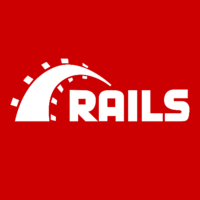What is RocksDB and what are its top alternatives?
Top Alternatives to RocksDB
 Redis
RedisRedis is an open source (BSD licensed), in-memory data structure store, used as a database, cache, and message broker. Redis provides data structures such as strings, hashes, lists, sets, sorted sets with range queries, bitmaps, hyperloglogs, geospatial indexes, and streams. ...
 Cassandra
CassandraPartitioning means that Cassandra can distribute your data across multiple machines in an application-transparent matter. Cassandra will automatically repartition as machines are added and removed from the cluster. Row store means that like relational databases, Cassandra organizes data by rows and columns. The Cassandra Query Language (CQL) is a close relative of SQL. ...
 MongoDB
MongoDBMongoDB stores data in JSON-like documents that can vary in structure, offering a dynamic, flexible schema. MongoDB was also designed for high availability and scalability, with built-in replication and auto-sharding. ...
 Badger
BadgerDomain management you'll enjoy. Domains effectively drive the entire internet, shouldn't they be easier to manage? We thought so, and thus, Badger was born! You shouldn't have to auction off your house and sacrifice your first born to transfer domains, you should be able to press a button that says "Transfer Domain" and be done with it. That is our philosophy, and we think you will appreciate it. Stop letting domain registrars badger you, and start using... Badger! ...
 HBase
HBaseApache HBase is an open-source, distributed, versioned, column-oriented store modeled after Google' Bigtable: A Distributed Storage System for Structured Data by Chang et al. Just as Bigtable leverages the distributed data storage provided by the Google File System, HBase provides Bigtable-like capabilities on top of Apache Hadoop. ...
 Aerospike
AerospikeAerospike is an open-source, modern database built from the ground up to push the limits of flash storage, processors and networks. It was designed to operate with predictable low latency at high throughput with uncompromising reliability – both high availability and ACID guarantees. ...
 Speedb
SpeedbSpeedb’s Log-Structured Merge (LSM)-based key value store supports petabyte scaling of datasets with billions of objects, while maintaining high performance and low hardware requirements. It is based on a patented compaction method that reduces the write amplification factor (WAF) up to 6X and adds enhancements that eliminate latency issues and IO stalls. ...
 Symas LMDB
Symas LMDBIt is an extraordinarily fast, memory-efficient database which is developed for the OpenLDAP Project. With memory-mapped files, it has the read performance of a pure in-memory database while retaining the persistence of standard disk-based databases. ...
RocksDB alternatives & related posts
- Performance887
- Super fast542
- Ease of use514
- In-memory cache444
- Advanced key-value cache324
- Open source194
- Easy to deploy182
- Stable165
- Free156
- Fast121
- High-Performance42
- High Availability40
- Data Structures35
- Very Scalable32
- Replication24
- Pub/Sub23
- Great community22
- "NoSQL" key-value data store19
- Hashes16
- Sets13
- Sorted Sets11
- Lists10
- NoSQL10
- Async replication9
- BSD licensed9
- Integrates super easy with Sidekiq for Rails background8
- Bitmaps8
- Open Source7
- Keys with a limited time-to-live7
- Lua scripting6
- Strings6
- Awesomeness for Free5
- Hyperloglogs5
- Runs server side LUA4
- Transactions4
- Networked4
- Outstanding performance4
- Feature Rich4
- Written in ANSI C4
- LRU eviction of keys4
- Data structure server3
- Performance & ease of use3
- Temporarily kept on disk2
- Dont save data if no subscribers are found2
- Automatic failover2
- Easy to use2
- Scalable2
- Channels concept2
- Object [key/value] size each 500 MB2
- Existing Laravel Integration2
- Simple2
- Cannot query objects directly15
- No secondary indexes for non-numeric data types3
- No WAL1
related Redis posts
StackShare Feed is built entirely with React, Glamorous, and Apollo. One of our objectives with the public launch of the Feed was to enable a Server-side rendered (SSR) experience for our organic search traffic. When you visit the StackShare Feed, and you aren't logged in, you are delivered the Trending feed experience. We use an in-house Node.js rendering microservice to generate this HTML. This microservice needs to run and serve requests independent of our Rails web app. Up until recently, we had a mono-repo with our Rails and React code living happily together and all served from the same web process. In order to deploy our SSR app into a Heroku environment, we needed to split out our front-end application into a separate repo in GitHub. The driving factor in this decision was mostly due to limitations imposed by Heroku specifically with how processes can't communicate with each other. A new SSR app was created in Heroku and linked directly to the frontend repo so it stays in-sync with changes.
Related to this, we need a way to "deploy" our frontend changes to various server environments without building & releasing the entire Ruby application. We built a hybrid Amazon S3 Amazon CloudFront solution to host our Webpack bundles. A new CircleCI script builds the bundles and uploads them to S3. The final step in our rollout is to update some keys in Redis so our Rails app knows which bundles to serve. The result of these efforts were significant. Our frontend team now moves independently of our backend team, our build & release process takes only a few minutes, we are now using an edge CDN to serve JS assets, and we have pre-rendered React pages!
#StackDecisionsLaunch #SSR #Microservices #FrontEndRepoSplit
Our whole DevOps stack consists of the following tools:
- GitHub (incl. GitHub Pages/Markdown for Documentation, GettingStarted and HowTo's) for collaborative review and code management tool
- Respectively Git as revision control system
- SourceTree as Git GUI
- Visual Studio Code as IDE
- CircleCI for continuous integration (automatize development process)
- Prettier / TSLint / ESLint as code linter
- SonarQube as quality gate
- Docker as container management (incl. Docker Compose for multi-container application management)
- VirtualBox for operating system simulation tests
- Kubernetes as cluster management for docker containers
- Heroku for deploying in test environments
- nginx as web server (preferably used as facade server in production environment)
- SSLMate (using OpenSSL) for certificate management
- Amazon EC2 (incl. Amazon S3) for deploying in stage (production-like) and production environments
- PostgreSQL as preferred database system
- Redis as preferred in-memory database/store (great for caching)
The main reason we have chosen Kubernetes over Docker Swarm is related to the following artifacts:
- Key features: Easy and flexible installation, Clear dashboard, Great scaling operations, Monitoring is an integral part, Great load balancing concepts, Monitors the condition and ensures compensation in the event of failure.
- Applications: An application can be deployed using a combination of pods, deployments, and services (or micro-services).
- Functionality: Kubernetes as a complex installation and setup process, but it not as limited as Docker Swarm.
- Monitoring: It supports multiple versions of logging and monitoring when the services are deployed within the cluster (Elasticsearch/Kibana (ELK), Heapster/Grafana, Sysdig cloud integration).
- Scalability: All-in-one framework for distributed systems.
- Other Benefits: Kubernetes is backed by the Cloud Native Computing Foundation (CNCF), huge community among container orchestration tools, it is an open source and modular tool that works with any OS.
Cassandra
- Distributed119
- High performance98
- High availability81
- Easy scalability74
- Replication53
- Reliable26
- Multi datacenter deployments26
- Schema optional10
- OLTP9
- Open source8
- Workload separation (via MDC)2
- Fast1
- Reliability of replication3
- Size1
- Updates1
related Cassandra posts
1.0 of Stream leveraged Cassandra for storing the feed. Cassandra is a common choice for building feeds. Instagram, for instance started, out with Redis but eventually switched to Cassandra to handle their rapid usage growth. Cassandra can handle write heavy workloads very efficiently.
Cassandra is a great tool that allows you to scale write capacity simply by adding more nodes, though it is also very complex. This complexity made it hard to diagnose performance fluctuations. Even though we had years of experience with running Cassandra, it still felt like a bit of a black box. When building Stream 2.0 we decided to go for a different approach and build Keevo. Keevo is our in-house key-value store built upon RocksDB, gRPC and Raft.
RocksDB is a highly performant embeddable database library developed and maintained by Facebook’s data engineering team. RocksDB started as a fork of Google’s LevelDB that introduced several performance improvements for SSD. Nowadays RocksDB is a project on its own and is under active development. It is written in C++ and it’s fast. Have a look at how this benchmark handles 7 million QPS. In terms of technology it’s much more simple than Cassandra.
This translates into reduced maintenance overhead, improved performance and, most importantly, more consistent performance. It’s interesting to note that LinkedIn also uses RocksDB for their feed.
#InMemoryDatabases #DataStores #Databases
Trying to establish a data lake(or maybe puddle) for my org's Data Sharing project. The idea is that outside partners would send cuts of their PHI data, regardless of format/variables/systems, to our Data Team who would then harmonize the data, create data marts, and eventually use it for something. End-to-end, I'm envisioning:
- Ingestion->Secure, role-based, self service portal for users to upload data (1a. bonus points if it can preform basic validations/masking)
- Storage->Amazon S3 seems like the cheapest. We probably won't need very big, even at full capacity. Our current storage is a secure Box folder that has ~4GB with several batches of test data, code, presentations, and planning docs.
- Data Catalog-> AWS Glue? Azure Data Factory? Snowplow? is the main difference basically based on the vendor? We also will have Data Dictionaries/Codebooks from submitters. Where would they fit in?
- Partitions-> I've seen Cassandra and YARN mentioned, but have no experience with either
- Processing-> We want to use SAS if at all possible. What will work with SAS code?
- Pipeline/Automation->The check-in and verification processes that have been outlined are rather involved. Some sort of automated messaging or approval workflow would be nice
- I have very little guidance on what a "Data Mart" should look like, so I'm going with the idea that it would be another "experimental" partition. Unless there's an actual mart-building paradigm I've missed?
- An end user might use the catalog to pull certain de-identified data sets from the marts. Again, role-based access and self-service gui would be preferable. I'm the only full-time tech person on this project, but I'm mostly an OOP, HTML, JavaScript, and some SQL programmer. Most of this is out of my repertoire. I've done a lot of research, but I can't be an effective evangelist without hands-on experience. Since we're starting a new year of our grant, they've finally decided to let me try some stuff out. Any pointers would be appreciated!
- Document-oriented storage829
- No sql594
- Ease of use554
- Fast465
- High performance410
- Free255
- Open source219
- Flexible180
- Replication & high availability145
- Easy to maintain112
- Querying42
- Easy scalability39
- Auto-sharding38
- High availability37
- Map/reduce31
- Document database27
- Easy setup25
- Full index support25
- Reliable16
- Fast in-place updates15
- Agile programming, flexible, fast14
- No database migrations12
- Easy integration with Node.Js8
- Enterprise8
- Enterprise Support6
- Great NoSQL DB5
- Support for many languages through different drivers4
- Schemaless3
- Aggregation Framework3
- Drivers support is good3
- Fast2
- Managed service2
- Easy to Scale2
- Awesome2
- Consistent2
- Good GUI1
- Acid Compliant1
- Very slowly for connected models that require joins6
- Not acid compliant3
- Proprietary query language2
related MongoDB posts
Recently we were looking at a few robust and cost-effective ways of replicating the data that resides in our production MongoDB to a PostgreSQL database for data warehousing and business intelligence.
We set ourselves the following criteria for the optimal tool that would do this job: - The data replication must be near real-time, yet it should NOT impact the production database - The data replication must be horizontally scalable (based on the load), asynchronous & crash-resilient
Based on the above criteria, we selected the following tools to perform the end to end data replication:
We chose MongoDB Stitch for picking up the changes in the source database. It is the serverless platform from MongoDB. One of the services offered by MongoDB Stitch is Stitch Triggers. Using stitch triggers, you can execute a serverless function (in Node.js) in real time in response to changes in the database. When there are a lot of database changes, Stitch automatically "feeds forward" these changes through an asynchronous queue.
We chose Amazon SQS as the pipe / message backbone for communicating the changes from MongoDB to our own replication service. Interestingly enough, MongoDB stitch offers integration with AWS services.
In the Node.js function, we wrote minimal functionality to communicate the database changes (insert / update / delete / replace) to Amazon SQS.
Next we wrote a minimal micro-service in Python to listen to the message events on SQS, pickup the data payload & mirror the DB changes on to the target Data warehouse. We implemented source data to target data translation by modelling target table structures through SQLAlchemy . We deployed this micro-service as AWS Lambda with Zappa. With Zappa, deploying your services as event-driven & horizontally scalable Lambda service is dumb-easy.
In the end, we got to implement a highly scalable near realtime Change Data Replication service that "works" and deployed to production in a matter of few days!
We use MongoDB as our primary #datastore. Mongo's approach to replica sets enables some fantastic patterns for operations like maintenance, backups, and #ETL.
As we pull #microservices from our #monolith, we are taking the opportunity to build them with their own datastores using PostgreSQL. We also use Redis to cache data we’d never store permanently, and to rate-limit our requests to partners’ APIs (like GitHub).
When we’re dealing with large blobs of immutable data (logs, artifacts, and test results), we store them in Amazon S3. We handle any side-effects of S3’s eventual consistency model within our own code. This ensures that we deal with user requests correctly while writes are in process.
related Badger posts
- Performance9
- OLTP5
- Fast Point Queries1
related HBase posts
I am researching different querying solutions to handle ~1 trillion records of data (in the realm of a petabyte). The data is mostly textual. I have identified a few options: Milvus, HBase, RocksDB, and Elasticsearch. I was wondering if there is a good way to compare the performance of these options (or if anyone has already done something like this). I want to be able to compare the speed of ingesting and querying textual data from these tools. Does anyone have information on this or know where I can find some? Thanks in advance!
Hi, I'm building a machine learning pipelines to store image bytes and image vectors in the backend.
So, when users query for the random access image data (key), we return the image bytes and perform machine learning model operations on it.
I'm currently considering going with Amazon S3 (in the future, maybe add Redis caching layer) as the backend system to store the information (s3 buckets with sharded prefixes).
As the latency of S3 is 100-200ms (get/put) and it has a high throughput of 3500 puts/sec and 5500 gets/sec for a given bucker/prefix. In the future I need to reduce the latency, I can add Redis cache.
Also, s3 costs are way fewer than HBase (on Amazon EC2 instances with 3x replication factor)
I have not personally used HBase before, so can someone help me if I'm making the right choice here? I'm not aware of Hbase latencies and I have learned that the MOB feature on Hbase has to be turned on if we have store image bytes on of the column families as the avg image bytes are 240Kb.
- Ram and/or ssd persistence16
- Easy clustering support12
- Easy setup5
- Acid4
- Petabyte Scale3
- Scale3
- Performance better than Redis3
- Ease of use2
related Aerospike posts
I have a very limited but significant use case for spatial index in a routing service. I see these indexes not growing beyond 10,000 geometries for the next 1 year and maybe 100,000 for the next 3 years. The solution needs to be approached from a delivery timeline perspective mostly because the use case also comes with a slightly relaxed compute time SLA and cost optimum implementation PoV.
We have chosen R-Tree based index as a suitable choice for our use case. We are already using Aerospike and MySQL in our stack. MySQL supports R-Tree and has good docs as well. I couldn't find anything specific to R-Tree with Aerospike. Also, generally would like to understand from the performance perspective how these two choices would fare with something like Tile38?
Suggestions beside these are also most welcome.





























